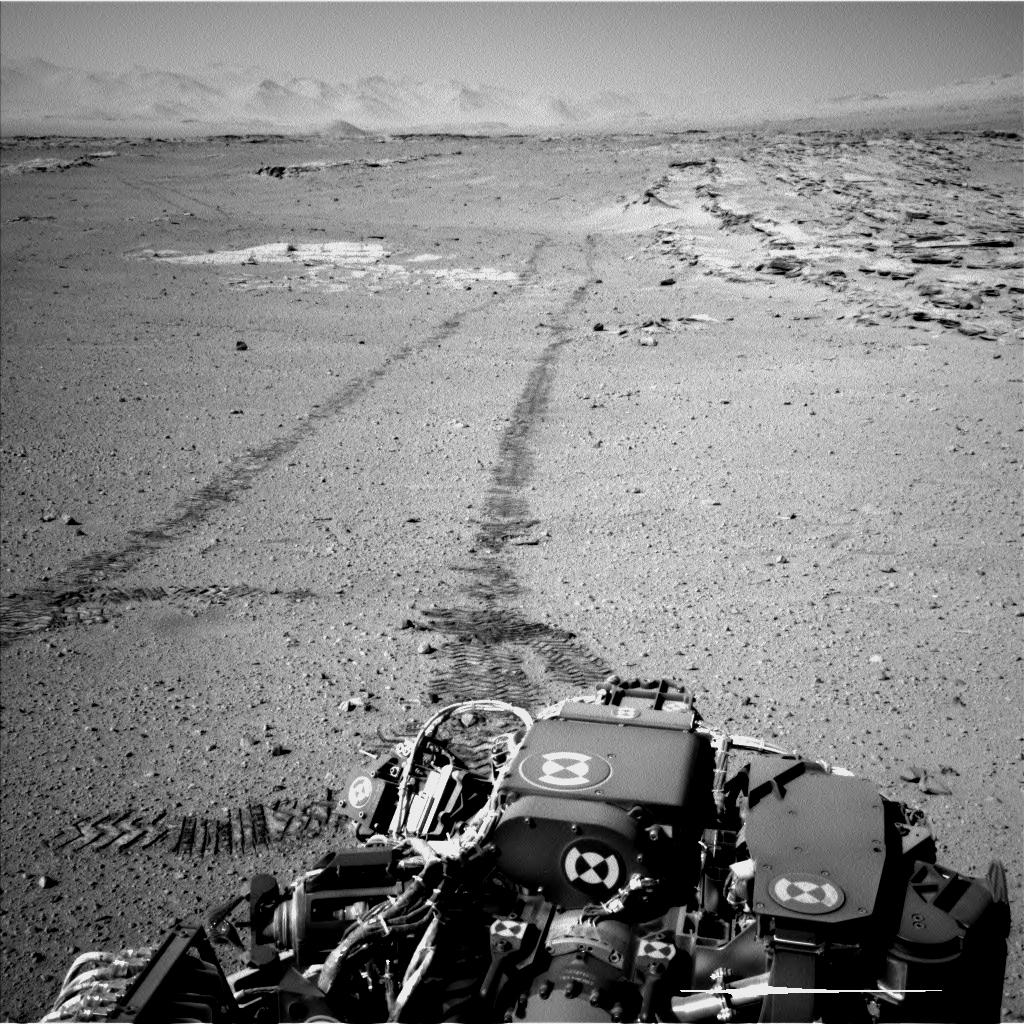
NASA's Mars rover Curiosity has taken some dazzling new photos of the Red Planet landscape, showing in sharp detail where it's been and the long road that lies ahead.
One of the new images, which the 1-ton Curiosity rover snapped on Feb. 19, depicts rows of rocks in the foreground and the towering Mount Sharp looming in the distance. The base of the 3.4-mile-high (5.5 kilometers) mountain is Curiosity's ultimate science destination, and mission scientists hope to reach it by the middle of this year.

"Images taken from orbit and used in planning the rover's route toward lower slopes of Mount Sharp had piqued researchers' interest in the striations on the ground that are formed by these rows of rocks," NASA officials wrote in a description of the image, which was released Wednesday (Feb. 26). "This particular outcrop is called 'Junda.' Similar striations are apparent on other patches of ground along the planned route." [See more amazing Mars photos by the Curiosity rover]
Another photo, also taken on Feb. 19, provides another perspective on the Junda striations, showing them receding into the distance as Curiosity rumbles by. And a third image, which the rover captured on Feb. 10, also looks back, showing Curiosity's tracks going up and over a small sand dune at a location that mission scientists dubbed "Dingo Gap."
The dune crossing allowed Curiosity to enter a valley with relatively smooth and soft ground — a priority for the rover's handlers, who want to minimize the wear and tear on the robot's six metal wheels. Team members also drove Curiosity backward over long stretches for the first time last week, testing out a strategy that could give the wheels more of a break.
When Curiosity reaches Mount Sharp, it will climb up through the mountain's foothills, reading the record of the Red Planet's changing environmental conditions that is preserved in the rocks there. Mission scientists hope to gain a better understanding of how and why Mars shifted from a relatively warm and wet world billions of years ago to the cold, dry world it is today.

The rover, which touched down on Mars in August 2012, will do some science work on the long trek to Mount Sharp. It will study, and perhaps drill into, rocks at an outcrop dubbed Kimberley, which lies along the route and also features some Junda-like striations, researchers said.
Sign up for the Live Science daily newsletter now
Get the world’s most fascinating discoveries delivered straight to your inbox.
Follow Mike Wall on Twitter @michaeldwall and Google+. Follow us @Spacedotcom, Facebook or Google+. Originally published on Space.com.











